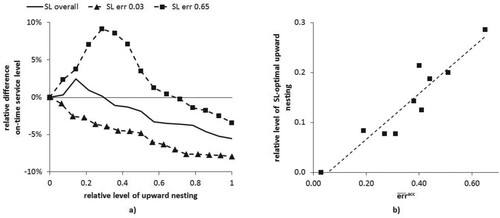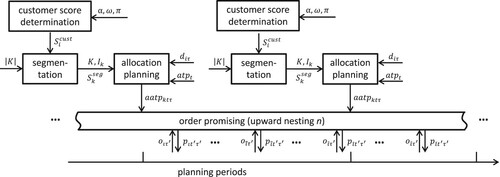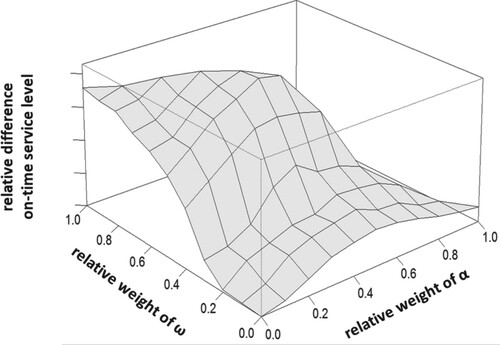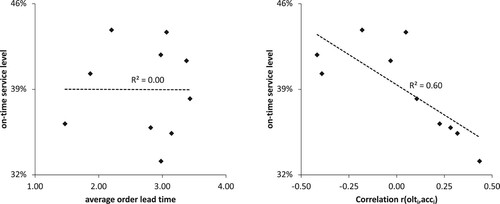Figures & data
Figure 1. Example of two different scenarios for the realisation of the order fulfilment process after an initial allocation, where the only difference is in the order lead time (on the left, customer A orders first; on the right customer B orders first).
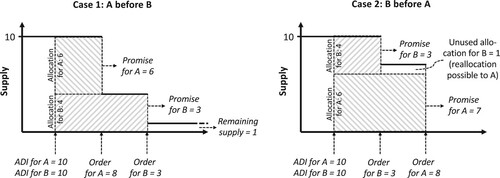
Table 1. Contract portfolios for numerical case study.
Table 2. On-time service levels per ADI accuracy error and number of customer segments.
Figure 3. (a) Relative difference in on-time service level by upward nesting level, (b) relative service level-optimal upward nesting level by error of ADI accuracy.
